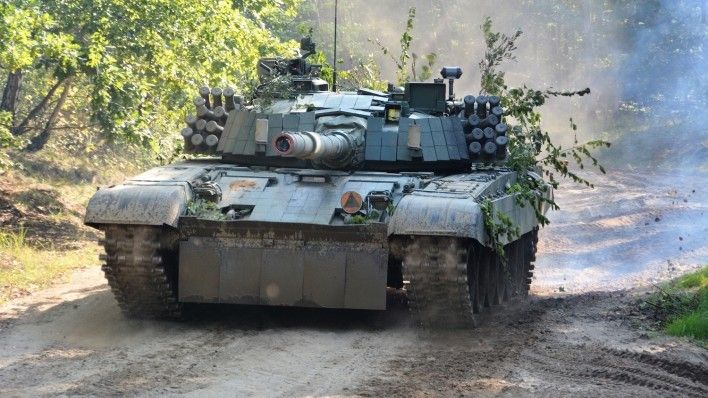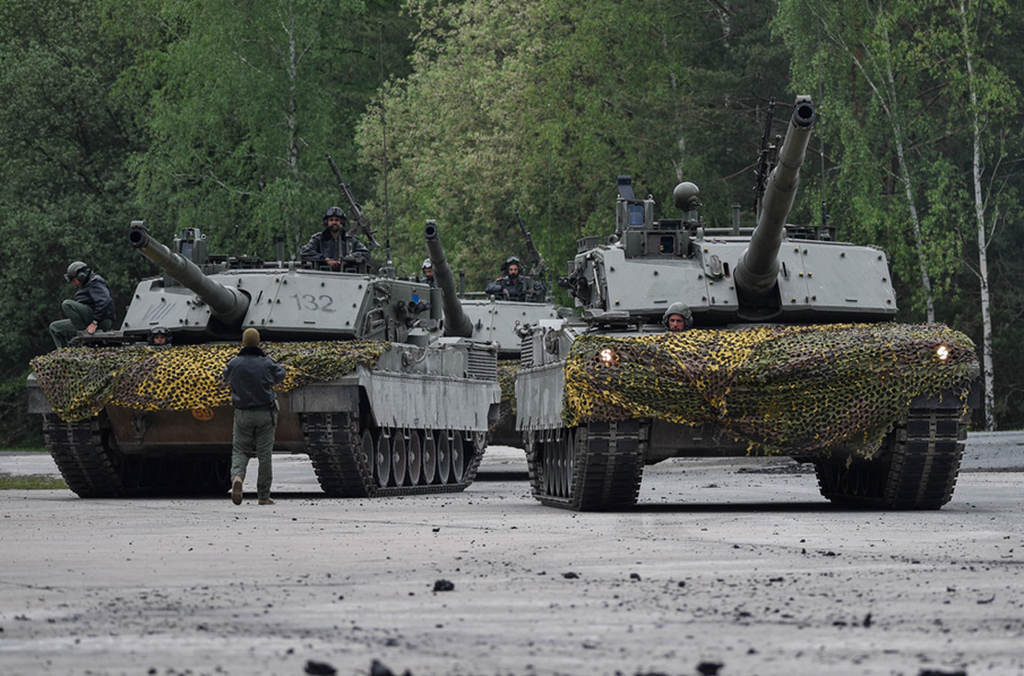Will Poland build a Main Battle Tank with Italy and Spain? "Political decisions are the key"

The Italian authorities have created a proposal for Poland and other states, including Spain, to jointly pursue a new generation MBT programme. PGZ emphasizes its interest in creating a new main battle tank, not excluding a joint project with some international partners. For the project to take place, political decisions are required.
Italy is considering the launch of a new main battle tank development project in collaboration with the NATO allies. The new platform would replace the C1 Ariete MBTs. Poland is among the nations that received the proposal. The Italian Ministry of Defence reached out to some of the EU nations, including Poland, and proposed collaboration in a project pertaining to land platforms. Analysis of that proposal is currently in progress at the Polish Ministry of Defence, the press department of the Operational Center of the Polish Ministry of Defence informed.
The proposal to begin effort aimed at the development of a new generation Italian-Polish MBT was mentioned last year by Marco Lupo, President at Leonardo Poland, during an interview for Leonardo Poland. He told us that Leonardo’s proposal assumes that a new MBT would be developed jointly, based on advanced tech provided by Leonardo and the PGZ Group. Lupo also noted that the Italian military has already expressed its need to introduce a replacement of the C-1 Ariete MBT. The new platform would be seen as a response to that requirement.

Currently, we already know that proposal as such has been submitted at the governmental level. Spain is another state that is being considered within the context of the Italian MBT-related collaboration. Defence24.pl has found out that the Spanish military attache contacted Poland to carry out a preliminary review of the Italian proposal.
Responding to our questions on the possible launch of a new generation MBT project involving Italy, the PGZ Group still stresses the fact that it remains ready to get involved in a program aimed at developing a new MBT through international collaboration. To define the direction, and the division of work, the partner selection needs to take place at the governmental level. PGZ is engaged in talks with a number of different potential partners in this area, nonetheless, the direction selection is not placed in the hands of the industry – the PGZ Group stated.
PGZ Group has submitted its own proposal to the MoD last year, within the scope of creating a Polish MBT, with the broadest degree of involvement possible, on the part of the Polish industry, public and private. We have carried out an analysis of the Polish potential and of the areas where we can be autonomous and those where R&D work launch is recommended, or those where it would be desirable to launch a collaboration with a foreign partner, the Group stressed. PGZ also added that the project itself is still solely a subject of analysis at the MoD. Thus, no details, for instance on work division, can be disclosed.
PGZ also notes, referring to the possible international cooperation, that scale “is the key in projects of that level of convolution. If not only are results of the work expected to meet the operational requirements, but they are also to be economically viable and profitable, then it is justified to adopt and accept involvement on the part of at least two-three states. This trend may be observed in a number of similar projects pursued around the world at the moment.”
The programme pursued by the Polish Ministry of Defence mentioned by PGZ is the Wilk MBT project. It is listed as one of the priorities of the MoD’s Technical Modernization Plan. The new MBTs are required to replace the obsolete T-72 and PT-91 platforms. The modifications of those have only been a gap-filler solution, since the aforesaid platforms have since become obsolete, not meeting the requirements of the contemporary battlespace.
The Wilk programme that is still in the analytical phase can be viewed as a major industrial opportunity, as Poland would be in need of 500 or even more MBTs. This quantity will be needed to replace the platforms making use of Soviet tech. The involvement of the Polish defence industry, public and private, is of key importance in our opinion, for instance, due to the potential scale the order may have, and due to the possible technological and know-how advancement, PGZ stressed.
It shall be recalled that both Poland, as well as Italy, wanted to become a part of the Main Ground Combat System (MGCS) new generation MBT programme pursued by Germany (leader) and France. So far, these efforts have not had a tangible result. It was in August last year, during the talks between Mariusz Błaszczak (head of the Polish Ministry of Defence) and Annegret Kramp-Karrenbauer (Błaszczak’s German counterpart) when Błaszczak was proposing that this programme shall be accelerated and that it should also become a part of PESCO.
The acceleration is especially relevant as the schedule adopted by the French and the Germans suggests that the new MBT should be delivered as of 2035. The date seems to be adequate for the current participants of the programme that operate the upgraded Leopard 2 and Leclerc platforms (that are still undergoing upgrades). However, for Poland willing to replace its obsolete T-72 and PT-91, this would not be optimal. Joining the MGCS programme at further stages, with the assumptions being defined in more detail (which has not been excluded by the French and by the Germans), could also create less optimal conditions for participation.
For these reasons, Poland is seeking alternative paths in the Wilk programme. The Italian proposal is yet another Wilk programme offer that envisages an international cooperative effort. Hyundai Rotem has submitted a proposal to jointly develop the K2PL MBT, a new variant of the K2 platform operated by the South Korean military adopted to meet the Polish requirements and using domestic, or Polonized components. The offer is supported by the Korean government, also within the scope of financing. The Korean proposal would involve broad cooperation, stepping beyond the defence sector too.
The decision on the implementation of the Wilk programme would have a political and strategic profile. It is a valid recommendation then, for the Polish industry to be involved in this project as deeply as possible. The competition between the bidders shall pave the way towards the selection of the best proposal and towards creating a generational leap for the Polish armoured units and for the industry as well, not only when it comes to facilities dealing with the development of armoured platforms.
